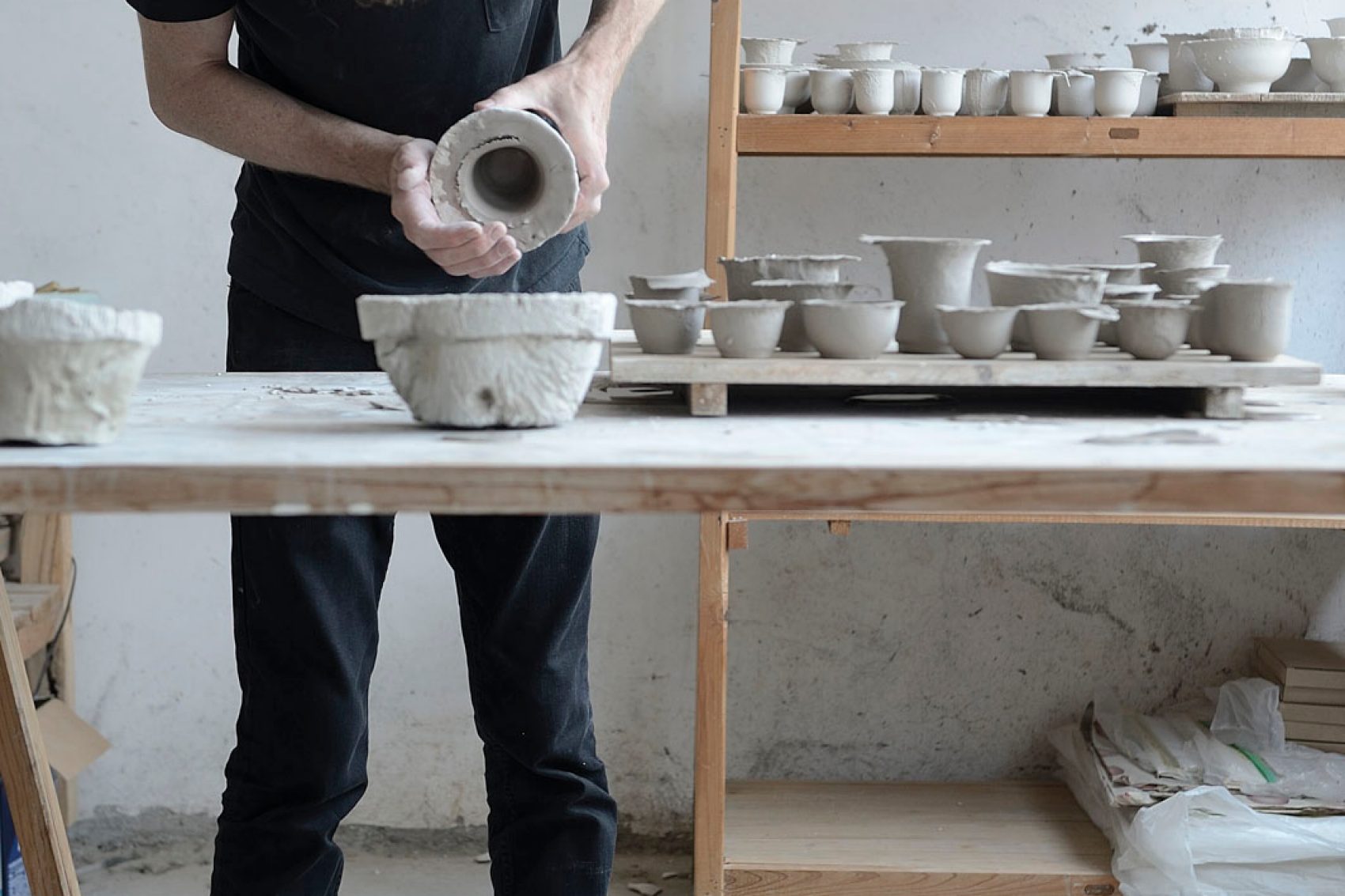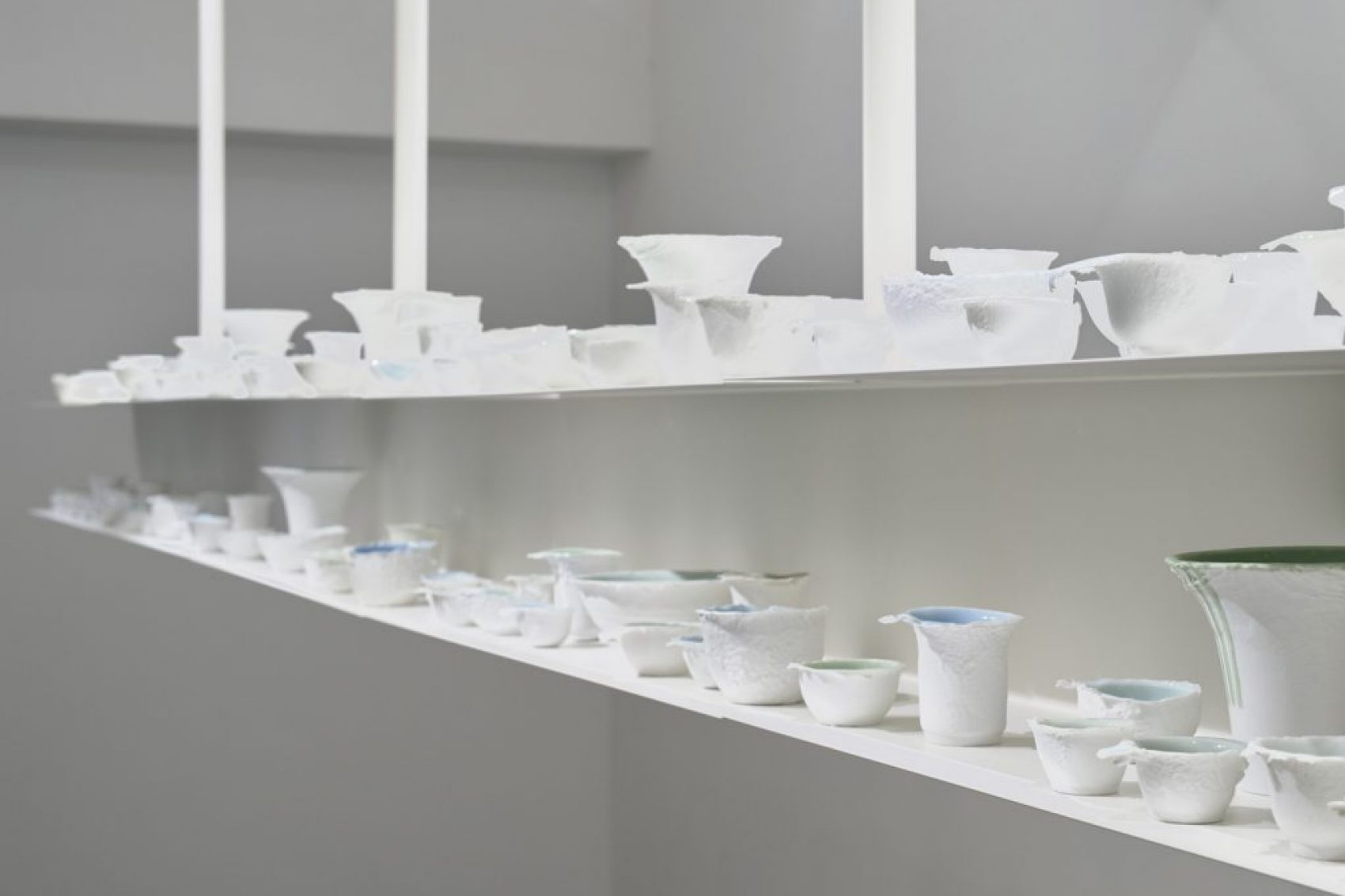Porcelain city: the modernisation of China's ceramic centre

Jesse McLin has been visiting Jingdezhen over the past 10 years to source high-quality tableware for Latitude22n, his hip Hong Kong-based ceramic brand. Jingdezhen is a town in the southern Chinese province of Jiangxi known for fine blue and white porcelain – a style called qinghua – and in the current era of mass production is still a place to commission pieces crafted individually and with extraordinary skill.
‘As a ceramicist, I find a common language with everyone else making these items,’ says McLin, who is originally from the US. ‘I can understand and relate to them. There’s also discovery: even after 10 years I am still surprised by new methods or finding someone with amazing skills, whether it’s ceramic painters, makers of big pots or someone who can carve extremely well.’

Credit: Qilai Shen
Jingdezhen has centuries of history making fine porcelain. Back in the day, emperors had porcelain from Jingdezhen brought to the courts. The goods were also known as ‘white gold’ due to the extremely high prices they commanded in trade activity with European countries. But after the end of dynasties and the Cultural Revolution, which started in the 1960s, this town’s craft waned.
Yet today, as the younger generations are rekindling everything artisanal, some of them have turned their focus on Jingdezhen and its ceramics, even heading to the town to forge new lives. Two decades ago, local ceramics artist Jackson Li decided to purchase a piece of farmland in the city’s Sanbao village and build a studio in the then-deserted area. Later, in 2000, he introduced the first artist residency programme in China, opening doors for foreign creatives to come to the land of porcelain. The Sanbao Ceramic Art Institute was born and today stands amid a thriving porcelain-making community.

Credit: Marc Progin
There’s a pounding sound coming from a few hundred metres from the studio: it’s produced by an ancient water-powered hammer mill used to break stone into clay. Li says a friend once described it as a heartbeat of China and to ‘never let it stop’. He keeps this in mind as he endeavours to revive and sustain the porcelain culture.
"Within these natural surroundings, I find myself immersed in the beauty of this traditional craft, which is such a strong part of China’s culture," says Li. "I’m fascinated by the history of porcelain here. It’s still a miracle to me how the craftspeople here find the stone, crush it by hand and make it into clay, and how they developed glazes from natural wood ashes to create ceramics."
Li says that when he first started building the art village there were not even paved roads to get into the area. But in the past five years, as people started to realise the opportunities and value in Chinese ceramic arts, local officials started to beautify the area with newly paved roads. As we speak, there are a few workers planting new trees in the grass just outside the studio. Today there are numerous studios, galleries, workshops, cafes and hostels along Sanbao Road. And then there’s the latest jewel: the Sanbaopeng Art Museum, a striking complex of rammed-earth and glass that pays homage to the town’s history surrounding porcelain.

"It is definitely a good thing for Jingdezhen to move forward, but as artists it is important to always remember to stick to our roots, preserving and appreciating our crafts from the past and combining them with modern thinking," says Li. "This is how we get the best outcome."
Another project bringing Jingdezhen back as a cultural hub is the Taoxichuan Ceramic Art Avenue, an art space converted from old factories. These red-brick buildings were, in fact, porcelain factories, consisting of kiln rooms and production lines, but were abandoned in the 1990s during the economic crisis. Now it is being preserved and put to different uses, thanks to government support in the form of over RMB 450 million, turning it into an art community bustling with shops, restaurants, cultural centres and galleries. It is packed with young crowds, especially on Friday evenings, when artists put their creations out for sale at an outdoor market.

Gang Hao, deputy manager of Jingdezhen Town Cultural Development, says she is proud of how Taoxichuan has influenced the overall atmosphere of Jingdezhen. "Young people are our future; we hope those who have come to pursue their ceramics dreams here will stay," she says. "That’s why when we created Taoxichuan our plans were to focus on these younger generations. This is a place that can bring people together; it attracts people from all over. I’ve also noticed that more people now appreciate what this place represents."
It is already in the government’s plan that many more former porcelain factories will be converted into art spaces in the next five years. The new spaces will have widely varying uses, including as artist’s studios, hotels, universities, theatres, sports grounds, offices and residential apartments. It is the city’s version of Beijing’s 798 Art District, but much bigger and arguably better. And with its recent connection to China’s high-speed rail network, it is for sure entering a new phase of transformation.
Hit List
See
Sanbao Ceramic Art Institute
A residency programme welcomes artists from overseas to learn the art of porcelain. The institute also houses one of the best restaurants in town.
4th Jiali, Sanbao Road
Sanbaopeng Art Museum
Located in Sanbao village, this tranquil, modern structure incorporates stepping stones over water paths and natural light in the galleries.
Taoxichuan Ceramic Art Avenue
Most of the town’s art is ceramics-related, but this space converted from a former porcelain factory showcases different media.
150 Xinchang West Road
Ancient Kiln Folk Customs Museum
This respected museum displays kilns from Qing, Yuan and Song dynasties. There are also craftsmen demonstrating the traditional ways of making porcelain.
Guyao Road
Antiques Market
Search through all kinds of old porcelain items and fragments. Sellers begin to appear at about 4am every Monday.
Guwan Shichang, Shuguang Road
Eat
Yixi
Enjoy dishes made from local produce in this beautiful space. It’s a private kitchen, so call ahead.
110 Sanbao Road, +86 180 0798 5062
Bar Southern Sloth
This is a ceramic artist hang-out spot, and it serves its house-brewed craft beer.
139 Xinchang East Road
Stay
Yo Yo House
Enjoy comfortable rooms in this B&B style hotel opened by a young couple. Single origin pours of coffee are available in the cafe at the entrance.
112 Sanbao Road
Ciliciwai Inn
You’ll feel calm and refreshed at this B&B with minimalist, zen interiors.
122 Sanbao Road
More inspiration
Wuhan travel information
- China – the Chinese Mainland, Hong Kong SAR, Macao SAR and Taiwan Region
- Hong Kong SAR - English
- Chinese Mainland (China) - English
- Taiwan China - English
- 香港特別行政區 - 繁體中文
- 中国內地 - 简体中文
- 中國台灣 - 繁體中文
- Africa
- South Africa - English
- Asia
- Bangladesh - English
- Korea - English
- Singapore - English
- Cambodia - English
- 한국 - 한국어
- Sri Lanka - English
- India - English
- Malaysia - English
- Thailand - English
- Indonesia - English
- Maldives - English
- ประเทศไทย - ภาษาไทย
- Indonesia - Bahasa Indonesia
- Myanmar - English
- Vietnam - English
- Japan - English
- Nepal - English
- Việt Nam - tiếng Việt
- 日本 - 日本語
- Philippines - English
- Australasia
- Australia - English
- New Zealand - English





.renditionimage.450.450.jpg)

